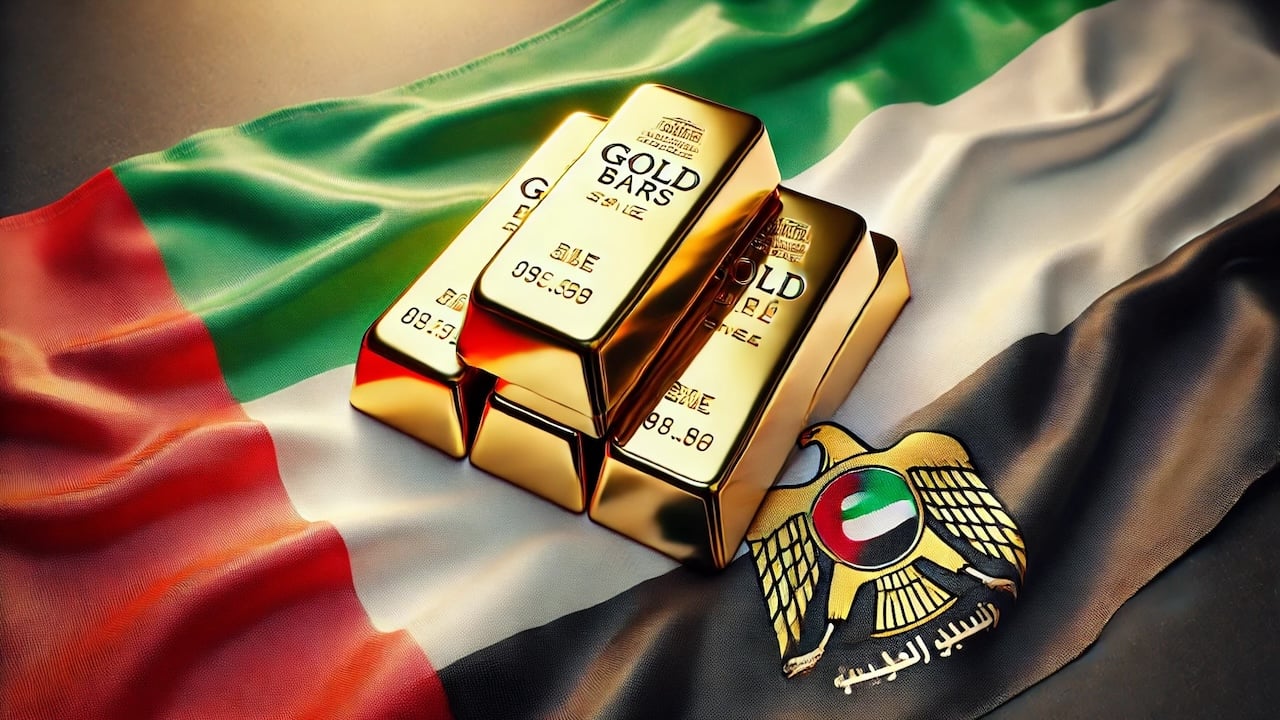(Mike Maharrey, Money Metals News Service) The United Arab Emirates is poised to usher in an “Asian Century” for gold to challenge dollar dominance, according to a report published by the Dubai Multi Commodities Centre (DMCC).
The UAE leapfrogged the United Kingdom to become the world’s second-largest gold trade hub in 2023. Dubai charted $129 billion in total gold trade last year, a 36 percent increase.
This is another sign that gold is slowly shifting from the West to the East.
According to the DMCC report, the UAE is positioned to facilitate the development of a new gold economic corridor among BRICS nations.
The UAE joined the BRICS block in January.
BRICS is an economic cooperation bloc originally made up of Brazil, Russia, India, China, and South Africa. Along with the UAE, Egypt, Iran, and Ethiopia joined at the beginning of the year. Saudi Arabia has also been invited to join, but it remains unclear if it has formally accepted.
Turkey, Azerbaijan, and Malaysia have formally applied to become members. Some 40 countries are reportedly interested in joining the block.
DMCC CEO Ahmed Bin Sulayem noted the shift of gold from West to East, specifically calling out the United States for weaponizing the dollar.
“In recent years, we have witnessed historic shifts in the precious metals market, driven by Western sanctions that have forced record buying of gold by central banks and a rethink by many countries when it comes to their reliance on the U.S. dollar.”
He went on to say aggressive sanctions on Russia “have shaken” the global financial community, “prompting countries worldwide to reconsider their reliance on the U.S. dollar and the safety of their gold holdings.”
“As a result, central banks have ramped up their gold purchasing activities and repatriated U.S.-stored bullion to diversify away from the dollar, with some even using gold in place of the U.S. dollar in trade transactions. This shift is driving gold prices to unprecedented levels, creating a ripple effect across the global economy.”
As of the end of the third quarter, central banks have added a net 694 tons to their gold reserves. The pace is below the record set through the first three quarters of 2023 but is on pace with 2022 levels.
Total central bank gold buying in 2022 came in at 1,136 tons. It was the highest level of net purchases on record dating back to 1950, including since the suspension of dollar convertibility into gold in 1971.
Sulayem said this trend is driving the creation of “a new gold corridor” across Asia, with Dubai as its center.
The report cites the UAE’s “strategic location, robust regulatory framework, and advanced infrastructure” as reasons the country can serve as a “bridge East and West and reshape the gold trade.”
The DMCC report called for increased transparency and regulation in the gold market and urged global players to make gold more accessible for young investors and those wishing to use it as a transactional currency. It specifically noted the need for “global standards for digital gold products and blockchain systems to improve transparency, eliminate pricing inconsistencies, and reduce reliance on derivative products.”
“Investment companies and fintechs should develop digital products that enable small-scale and young investors in emerging markets to access gold trading, expanding market participation.”
Gold’s Slow Steady Shift East
The dollar isn’t in imminent danger of toppling off its throne as the world reserve currency, but its dominance is clearly waning.
While the recent BRICS summit in Kazan, Russia, didn’t produce a clear plan for an alternative currency, the bloc is undeniably pushing to lessen the dollar’s role in the global economy.
Russia was pushing hard for BRICS to consider an alternative payment system to replace the dollar-denominated SWIFT system. But after the summit, Russian President Vladimir Putin conceded that there was no immediate plan, saying the economic bloc “have not and are not” creating such a system.
Nevertheless, plenty of rhetoric came out of the meeting indicating that the U.S. shouldn’t think de-dollarization is off the table. In fact, the Atlantic Council identifies the rise of BRICS as a threat to long-term dollar dominance.
“The project identifies the BRICS as a potential challenge to the dollar’s status due to the individual members’ signal of intent to trade more in national currencies and the BRICS’ growing share of global GDP.”
Any drop in the dollar’s stature would be problematic for the United States.
The U.S. depends on this global demand to underpin its bloated government. The only reason it can borrow, spend, and run massive budget deficits to the extent that it does is the dollar’s role as the world reserve currency. It creates a built-in global demand for dollars and dollar-denominated assets. This absorbs the Federal Reserve’s money creation and helps maintain dollar strength despite the Federal Reserve’s inflationary policies.
But what happens if that demand drops? What happens if BRICS nations and other countries don’t need as many dollars?
A de-dollarization of the world economy would cause a dollar glut. The value of the U.S. currency would further depreciate. At the extreme, global de-dollarization could spark a currency crisis. You and I would feel the impact through more price inflation eating away at the purchasing power of the dollar. In the worst-case scenario, it could lead to hyperinflation.
Mike Maharrey is a journalist and market analyst for MoneyMetals.com with over a decade of experience in precious metals. He holds a BS in accounting from the University of Kentucky and a BA in journalism from the University of South Florida.

